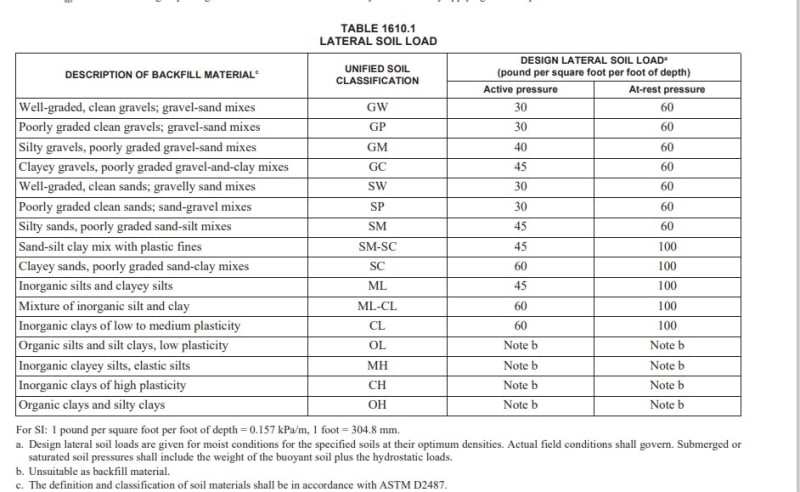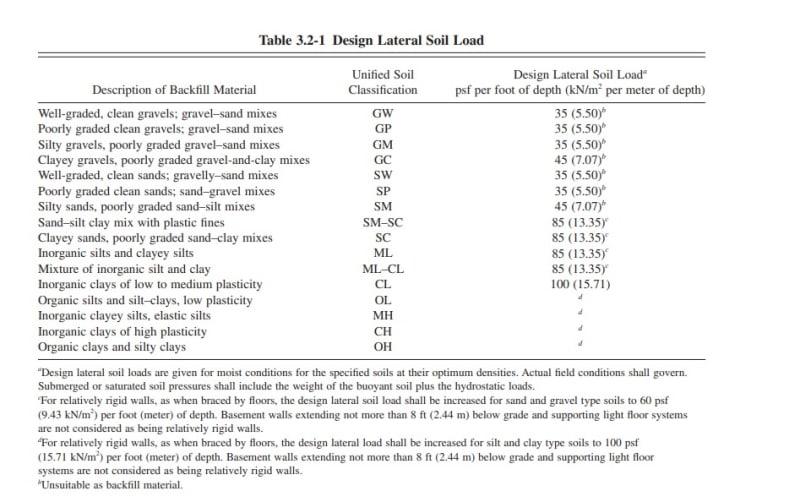tonybridges
Civil/Environmental
Hello I am currently studying for the PE and I am confused on what value to use for the design lateral earth pressure
The 7-10 says in Table 3.2-1 that for well grade soils the design load is 35 psf
While the IBC says on 1610.1 to use 30 for active and 60 for at rest
The difference is greater or smaller depending on what soil you look at and if it is active or passive. Why is there such a massive difference?
Here are the tables for reference


Thanks for any help!
The 7-10 says in Table 3.2-1 that for well grade soils the design load is 35 psf
While the IBC says on 1610.1 to use 30 for active and 60 for at rest
The difference is greater or smaller depending on what soil you look at and if it is active or passive. Why is there such a massive difference?
Here are the tables for reference


Thanks for any help!
